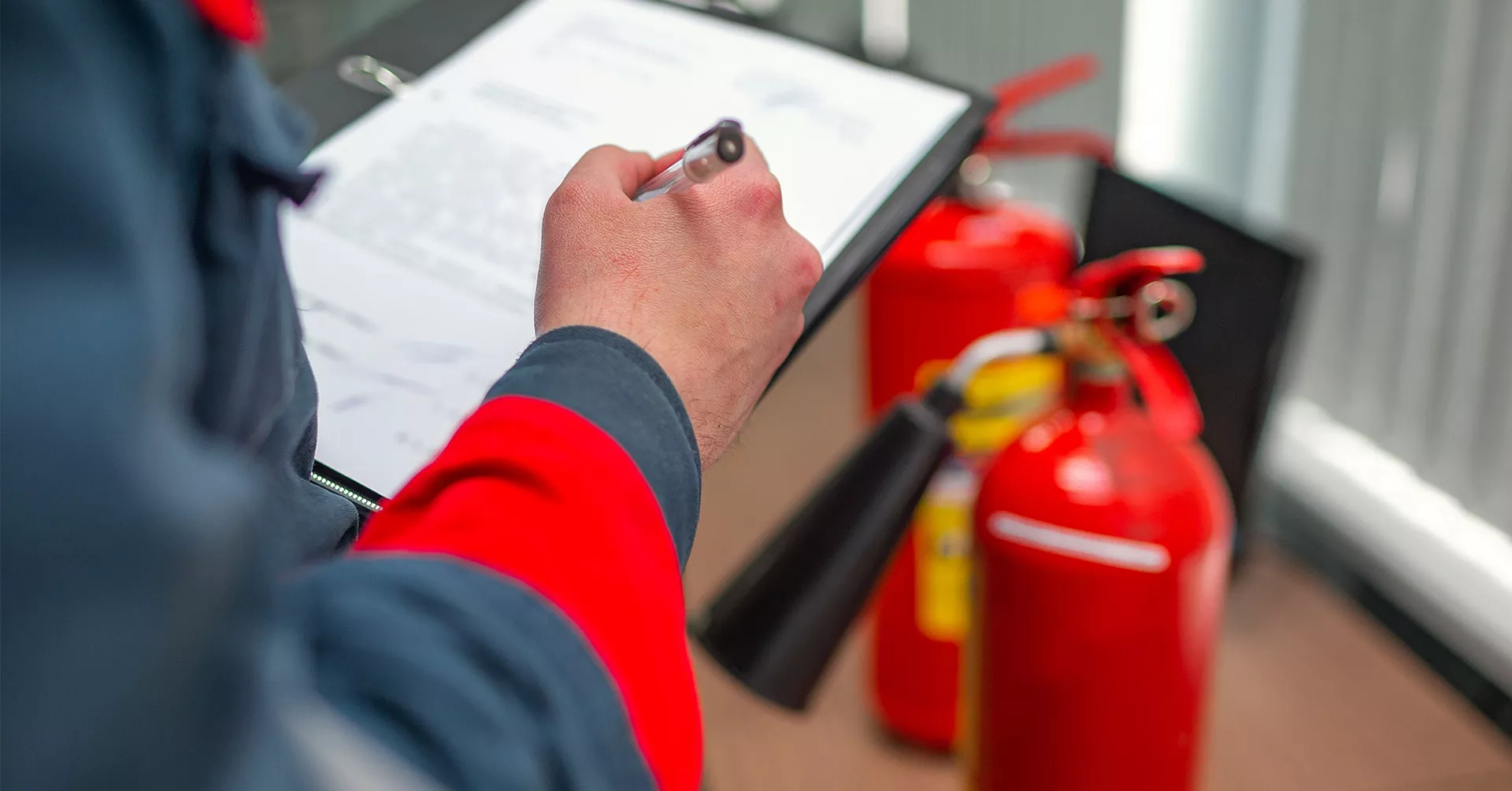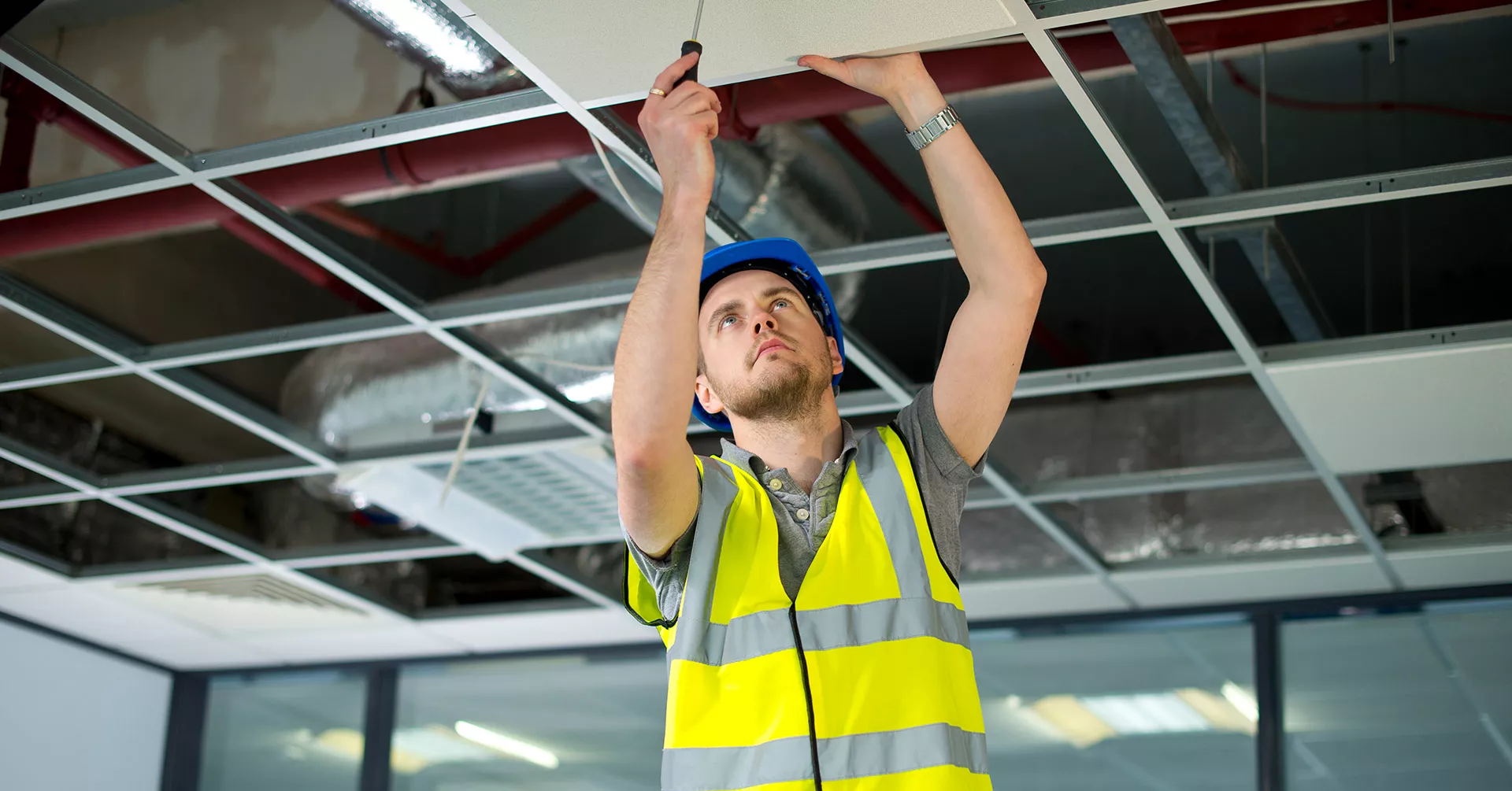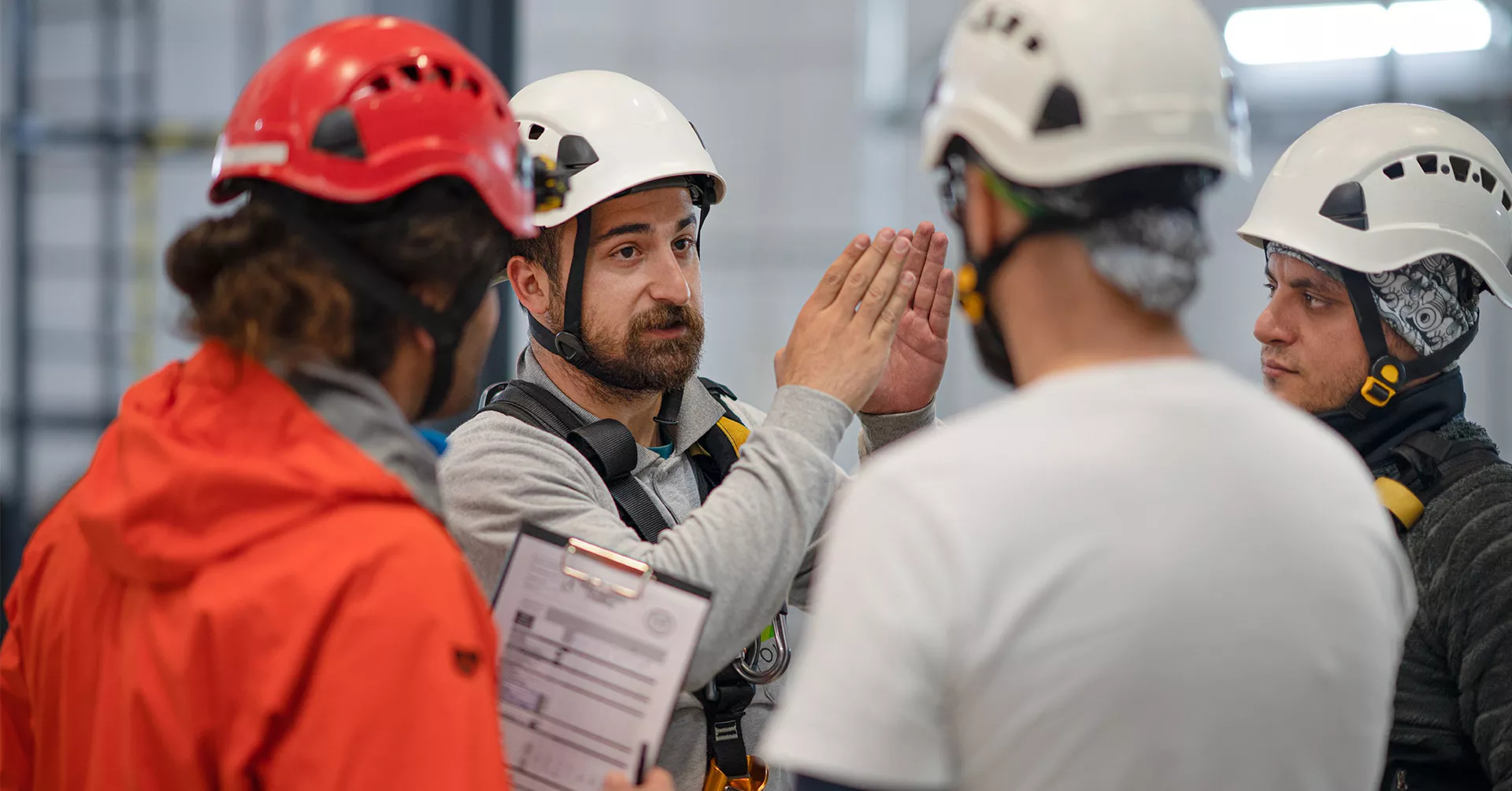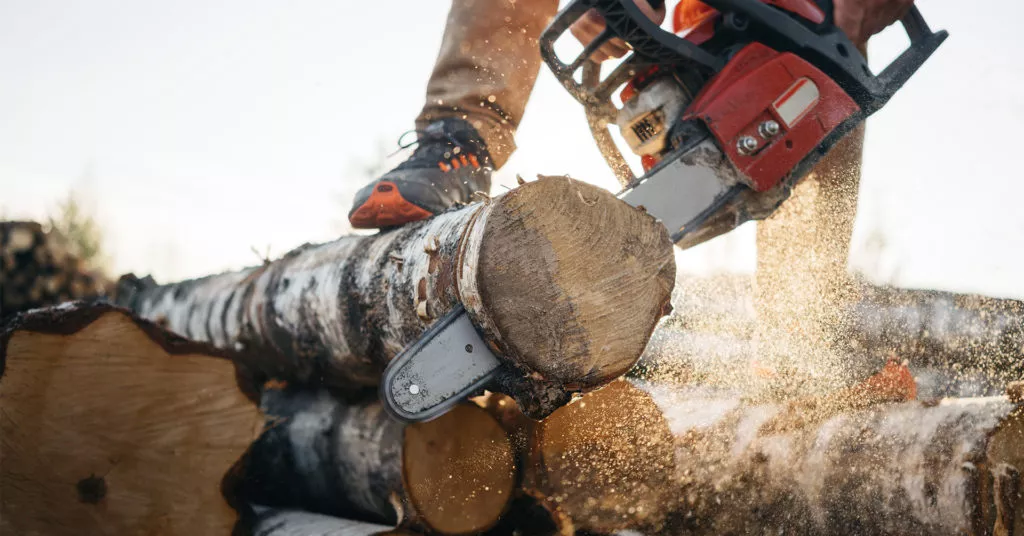
The 7 Most Dangerous Jobs and Tips for Reducing Workplace Accidents
Some jobs are more dangerous than others. Here are the seven most dangerous jobs in America, as well as tips on how to keep at-risk workers safe.

Since 1972, it’s become dramatically safer to be a worker in America.
Incidents of worker death, injury, and illness have all decreased significantly across all sectors.
Work done by OSHA and labor advocates—like mandatory PPE or standardized ratings for equipment like ladders—has created a host of safety procedures, many of which we now take for granted.
While most jobs have become far safer due to these new practices, new challenges require new solutions. Perhaps the single most apparent indicator of this is the sheer chaos caused by the COVID-19 pandemic.
The professional and personal impacts of the COVID-19 pandemic are well documented. But, until recently, quantifying its toll on workplace safety was near impossible due to the manner in which data on these incidents is collected.
We now know that, according to the U.S. Bureau of Labor Statistics (BLS), 2020 saw a lower frequency of nonfatal injuries, such as slips, trips, and falls, since many workers were homebound, furloughed, or laid off entirely. On the other hand, worker illnesses skyrocketed to levels never seen before in recorded data.
Clearly, the landscape of job site dangers had shifted dramatically.
In 2021, workers in all sectors of the U.S. averaged a fatality rate of 3.5 incidents per 100,000 workers, but some occupations have rates much higher than that.
In this article, we’ll discuss insights from the BLS report, including the most dangerous occupations based on the census of fatal occupational injuries, common causes of death and injury, as well as ways your organization can reduce workplace accidents.
The 7 Most Dangerous Jobs in the U.S.
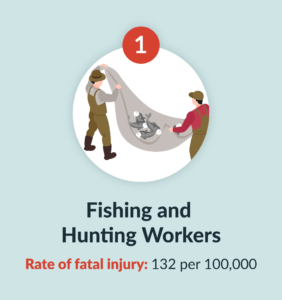 #1 Fishing and Hunting Workers
#1 Fishing and Hunting Workers
Rate of fatal injury: 132 per 100,000
Most common cause of injury: Transportation accidents
Professional fishers and hunters—including game wardens, hunting guides, and other wilderness workers—face great dangers due to the remoteness of their work. Not only does most of their work take place in unpopulated areas, but it also entails traveling over rough terrain in motor vehicles or crossing open water in boats. If such workers experience an accident while driving or boating, the sheer distance between them and any help significantly increases the danger of those risks. Those familiar with TV programs such as Deadliest Catch are probably unsurprised that these jobs take the #1 spot for the most dangerous job.
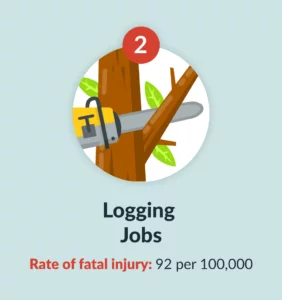 #2 Loggers
#2 Loggers
Rate of fatal injury: 92 per 100,000
Most common cause of injury: Transportation Incidents
Unsurprisingly, cutting down large trees, often in the remote wilderness, is a recipe for trouble. While the fatal injury rate for logging workers has declined somewhat over recent years, the occupation retains much of its inherent risk. Dangerous tools like chainsaws, unpredictable falling trees, and the need for transporting heavy machinery deep into isolated locations have earned logging workers a long-held reputation as practitioners of one of the most dangerous jobs in the world.
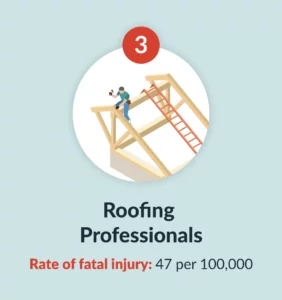 #3 Roofing Professionals
#3 Roofing Professionals
Rate of fatal injury: 47 per 100,000
Most common cause of injury: Falls
Roofers are the unsung heroes of the construction industry: they work long hours often in the brutal heat doing manual labor without the benefit of shade. As roofers naturally work high above the ground, the leading cause of injury among them are falls to a lower level. Falls of just 6 feet can cause serious injuries, and falls from multiple stories up are reliably fatal. Personal Fall Arrest Systems (PFAS) are vital equipment and should be provided to roofing workers, as well as training on how to use them effectively. OSHA recognizes that poor training or poor maintenance of PFAS (or outright ignorance of them) contribute to the high rates of falls seen among these workers.
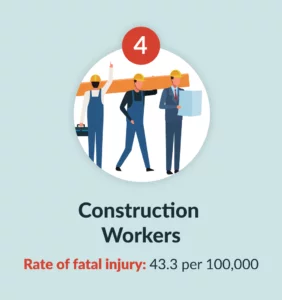 #4 Construction Workers
#4 Construction Workers
Rate of fatal injury: 43.3 per 100,000
Most common cause of injury: Falls, heavy equipment accidents, hazardous materials
Construction is one of the most common jobs in the U.S. and is also one of the most dangerous. The threats posed to laborers on construction sites are varied and potentially deadly. Like roofers, construction laborers might also work where there’s a risk of falling to a lower level, and similar safety breaches like poorly-maintained equipment or lax safety procedures can lead to injury and death.
“Construction” is a very broad term that essentially means “to build,” and the type of building being worked on encompasses many construction trades, each with its own risks. For example, a construction crew working on an old home will have to deal with asbestos in the walls or other hazardous materials. Other jobs might require the use of specialized power tools, or face a risk of electrocution if installing wiring. With all of the potential danger that surrounds construction workers, it’s no wonder they suffer from some of the highest rates of injury and death in any industry.
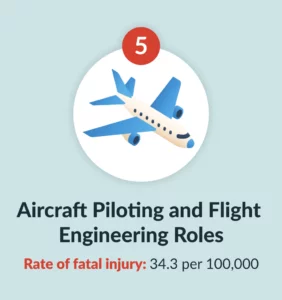 #5 Aircraft Piloting and Flight Engineering Roles
#5 Aircraft Piloting and Flight Engineering Roles
Rate of fatal injury: 34.3 per 100,000
Most common cause of injury: Transportation incidents
Commercial air travel has become incredibly safe over the decades since it was introduced, but aircraft pilots and flight engineers (cockpit crewmembers who manage and monitor sophisticated equipment) still face high rates of accidents and fatal work injuries. These numbers are likely highly inflated by the deaths of (often inexperienced) pilots of small aircraft which naturally have much higher rates of mechanical failure and crashing. This rate was higher in earlier years, but the COVID-19 pandemic grounded many planes, reducing the number of fatalities.
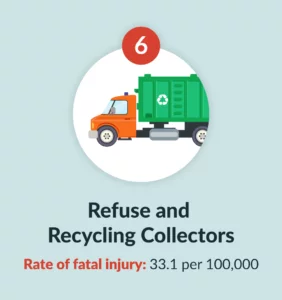 #6 Refuse and Recycling Collectors
#6 Refuse and Recycling Collectors
Rate of fatal injury: 33.1 per 100,000
Most common cause of injury: Heavy equipment accidents
Another common job, refuse and recyclable materials collectors work with heavy machinery day-in, day-out. If you’ve ever seen a refuse collector riding on the back of a garbage compactor truck, you’ve witnessed the dangers those workers face. For example, falling off the truck, being hit by one’s own truck, or being injured by high-powered compactors are ever-present risks to those who work around them every day. Sticking to strict safety procedures, such as when a crew member can leave the truck and keeping it in park until they’ve safely returned, are key to keeping risk as low as possible.
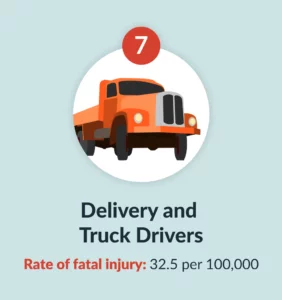 #7 Delivery and Truck Drivers
#7 Delivery and Truck Drivers
Rate of fatal injury: 32.5 per 100,000
Most common cause of injury: Transportation incidents
These days, most consumers expect goods delivered promptly and easily without ever having to set foot outside. However, those boxes have to get to your door somehow, and delivery workers and truck drivers shoulder much of the risk of doing so. Casual drivers face a multitude of hazards whenever they drive such as weather conditions, and those who drive as part of their job face those risks to an even greater degree. Vehicular crashes account for the vast majority of workplace fatalities and injury among this segment of workers.
How to Prevent Workplace Accidents
Even though the risks that workers from different sectors face can vary widely, there are some things that everyone can do to improve safety outcomes.
Review your safety procedures
Run tests and drills to ensure that your people and your resources are prepared to prevent and respond to safety hazards and emergencies.
Tabletop exercises are a great way to allow your team to work through hypothetical scenarios in a low-risk, low-pressure environment. That way, when a real emergency strikes, they’ll already have experience responding to it. When safety incidents do occur, an after-action review or “hotwash” will also help you understand the root cause and outline steps to avoid future incidents.
Prioritize timely communication
Be sure to allow an open flow of communication between you and your workers. You should alert them of hazards as soon as possible, and allow them to contact you with safety concerns or questions. A two-way communication system is vital if you want this crucial back-and-forth of information to occur smoothly and easily.
Foster a culture of vigilance and safety
There are many ways to ensure safety on the job but only one way to engender an eye for safety in each of your employees, and that’s to build a culture of safety from top to bottom and across your entire organization. Make sure that being safe and maintaining safe practices is an ever-present part of your company’s efforts, and empower your workers to point out what makes them feel unsafe and fix it.
When everybody is continuously invested in safety and empowered to highlight potential issues, better safety outcomes are assured.
Putting Safety First
Ultimately, as an employer, you must do everything in your power to ensure the safety of your employees. If your employees might face danger on the job, you should make sure that they have every protection made available to them. Not only is this duty of care the right thing to do financially and morally, but it will also show your employees that you’re dedicated to them, and they in turn will be more dedicated to the organization as a whole.

